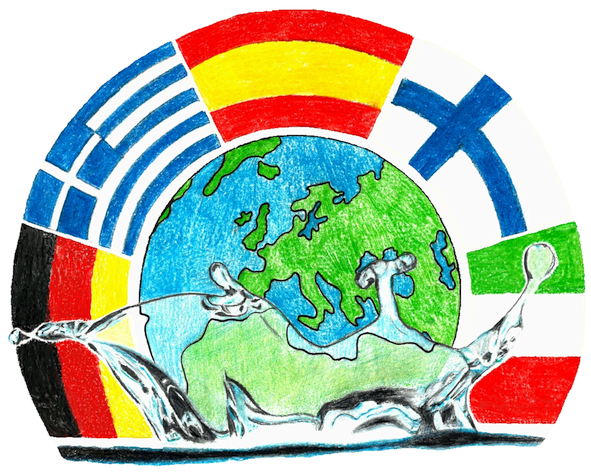Art and History (Module 1)
Module 1, “Art and History”, organized by Liceo Ginnasio G. B.Vico (Italy), examines how in the different regions the perception of water has changed over time from an artistic point of view and how this is reflected in today’s painting, music, and literature.
The students will investigate the importance of water as a leitmotif in works of art, and they will compare examples from different eras. Also, they will explore changes in the Fine Arts in a broader sense through research in archives, libraries, museums, and interviews with experts in the field.
In the world of music, the students will deal with topic of “water” by researching whether water can be regarded as a leitmotif in the traditional song and music repertoire of each participating region and how traces of such a leitmotif have changed over time. Here, the students should be supported by subject teachers or external specialists.
Furthermore, the participants will foster their creative skills by writing short stories or poems about the subject, in English or in their native languages. These literary pieces should reflect the typical features of each region.
Photography combines the artistic dimension with a useful one. It is desirable to involve professional photographers in this project task so that the students’ skills may profit from professional expertise. The photos should also be used to portray the work at hand and to provide information for the other modules.
In a photography competition, the participants will deal with the subject of “water” creatively by using artistic means of design as well as digital techniques. The best pictures will be chosen for an event calendar for the participating students. Besides, they will be published on the project website and incorporated into the projected app. To choose the winners, there will be a jury of participating teachers, students, and, if possible, professional photographers. The number of the photographs will be limited by the project partners. This task is intended to reward the students’ artistic and creative skills.
With the help of this module, the students should be
able to
- organise and coordinate the research with external partners such as regional archives, museums and artists.
- work in multinational and multilingual teams.
- research, evaluate, process, and edit the information gained.
- summarise the relevant information for a digital presentation.
- use photo editing software to edit photos in a creative way (relevant for all other modules).
- work with text and photo editors to create appropriate learning and teaching materials (relevant for all other modules).
- discuss and exchange relevant information and organise the next stages in the working process.
- split complex tasks into smaller sections which can then be tackled by individuals or small teams.
- create a presentation with a meaningful structure and a good layout.
- explain success criteria for the composition of short stories and poems and use them for their own creative work.
- critically assess various works of art against the backdrop of contemporary society.

